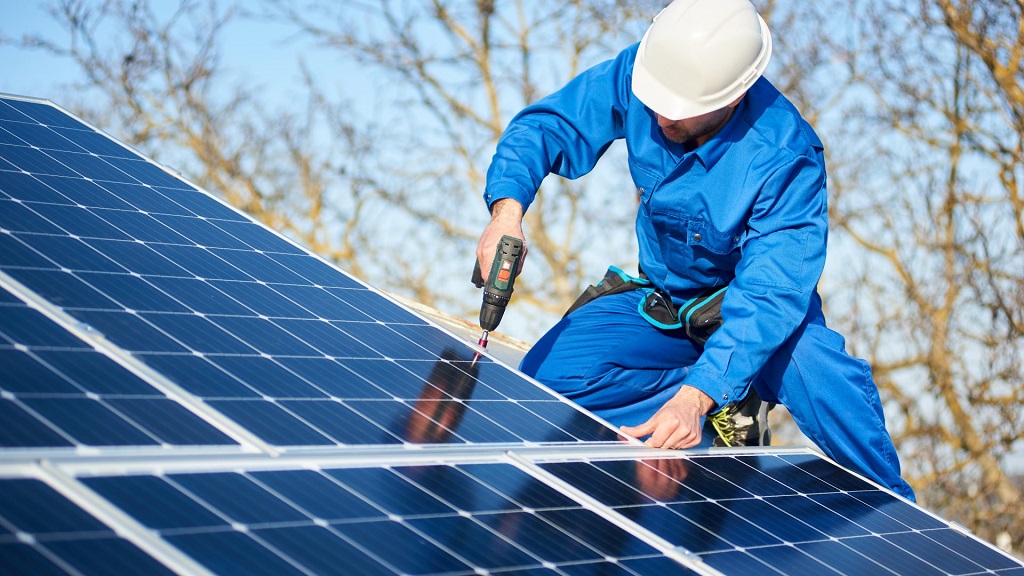How Much Money Can You Save If You Use Solar Panel?

Solar power is an excellent way to save money on energy bills. In addition, it can be even more cost-effective in some locations than traditional electricity.
The amount you save depends on various factors, including your home’s average usage and the rate your utility company charges. However, you can expect savings of around $1,500 per year.
Energy savings
The solar panel savings depends on your home’s energy usage and local electricity rates. You can also receive state and federal rebates to help you save even more.
You’ll also get a credit on your electric bill for any excess power your solar panels produce that you send back to the grid. It is called net metering. The exact details will vary by state and utility, but it can be a great way to offset your solar panel system’s low production periods.
As your family changes and you have more appliances, your energy usage may increase, which might mean that your solar panels no longer produce enough to cover your needs. To avoid this, consider adding more commissions to ensure your solar panel system can meet your current and future electricity demands.
In addition to energy savings, solar panels can also reduce your carbon emissions and help preserve the environment. They’re also a significant investment that can pay for itself in the long run. They can provide an excellent return on investment if you live in an area with high electricity rates and solar incentives.
Cost
The cost of using solar panels varies depending on the type of system you use and whether you install your system or pay a developer to install the equipment for you.
The first step in calculating your cost is determining how much electricity you use. It can be done by looking at your current utility bill and dividing it by the rate your power supplier charges per kWh.
Next, you need to know the number of panels you will need to generate enough energy to meet your needs. It will vary depending on your roof size, how many appliances you have in your home, and how you plan to connect your system to the grid.
If you have the funds, you may pay for your solar system in cash and immediately reap the advantages of decreased energy costs and federal tax credits. However, if you don’t have the funds, a solar loan through your bank can be a great option, allowing you to pay off your system over time with monthly payments.
The cost of installing solar panels varies based on the type of panel you select and the market in your area. The most common residential options are monocrystalline, polycrystalline, and thin-film solar panels. These have different energy efficiency ratings and life expectancies, but monocrystalline is your most cost-effective choice.
Payback period
The payback period for solar panels is the time it takes to save as much money on your electricity bill as you paid for the system. This number can vary based on many factors, such as the size of your system and energy costs in your area.
The average payback period for a solar installation is about eight to 12 years, but this number can differ from home to home. Local electricity costs and state-specific financial incentives, such as tax credits and solar rebates, primarily determine it.
This number also depends on the size of your roof and how well the system matches your electricity usage. For example, a more extensive solar array will have higher upfront costs but monthly savings than a smaller one.
Similarly, the amount of sunshine your area receives can affect how fast your solar system pays for itself. States with more sunshine are likely to have shorter payback periods, while places with less sun will have longer ones.
Other factors can alter your payback period, such as maintenance costs, which can be high in some areas. However, keeping your solar panels clean can help extend your output and save you money in the long run.
When determining your repayment duration, it is critical to consider these variables. In addition, it will ensure you get the most out of your solar installation.
Tax credits
The government offers several incentives to help homeowners use solar energy. One of these is the solar tax credit, which can save you substantial money.
The federal solar investment tax credit allows you to claim 30% of the total cost of your solar installation on your federal income tax return. The credit is available until 2022.
In addition, the credit can also be claimed on your state taxes. The solar tax credit is a great way to save money on your home energy bills, so it’s essential to know how it works before you start planning your system.
Another tax incentive is a solar renewable energy certificate (SREC). This program rewards homeowners for the power their systems produce, and it’s easy to earn them by signing up with your local utility.
If you’re looking for a quick and effective way to reduce energy bills, consider installing solar panels. With a significant federal tax credit and state incentives, it’s a wise decision for any homeowner.
Keeping track of all costs related to your solar panel system, including equipment, permitting, and labor, is essential. It’s also necessary to understand the different rebates you may receive and how they will affect your credit. For instance, reimbursement from your utility company is generally excluded from your tax return because it isn’t a direct cost of installing your solar system.
